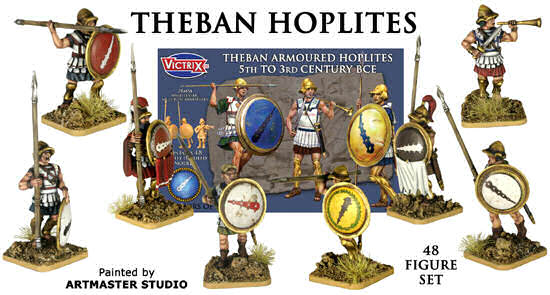


Shield blazons were an individual's perogative, but when helots were armed as hoplites, they would have been provided with their shields by the state, not have bought them individually. My own theory is that Spartans first introduced the lambda not for Homoioi (full citizens), but for helots that were serving as hoplites, and its usage probably spread from there to the rest of the army. The Mantineians may have adopted the trident of Posidon by the mid 5th century as there is a refrence in Bacchylides to it. It is widely assumed that Sparta was the first state to introduce uniform shield patterns, but the evidence does not bear this out. One philospher's was covered with quotes, another man's had the device of an anchor to demonstate his determination not to retreat. While such state badges seem to have become more common as time went on - the Macedonian Hellenistic states seemed to have regular shield patterns, many states continued with allowing their men to chose whatever badge they desired. He also mentions men from Sicyon carrying the letter sigma as a badge, and the Thebans, as well as their allies, using a club, although the Thebans had used individual shield designs only a few years previously as shown by Plutarch: the man who killed Lysander had a dragon as his emblem. Such shields are attested by Xenophon in the early 4th century BC. However, they changed this personal-preference policy into one of state control, whereby each man carried the same badge - in this case the letter lambda (for Lakedaimon, another name for Sparta). Accused of cowardice (his enemies wouldn't be able to recognise him) he responds that the fly would be the size of a lion when he bore down on his enemy in battle. There is an anecdote which talks of a Spartan who had a life-sized fly for his emblem. This was true even of the Spartans, at least initially. Generally, each hoplite chose his own shield design. The word hoplon did not actually come to mean the peculiar shield associated with hoplites until the end of the 5th century, and even then it was still more often referred to by the more generic name "aspis". I use "Greek" in a wide sense including Greek-influenced Italian states such as Campania, from where most late 4th century depictions of hoplons come from. Most of the shields shown here are "hoplons", a few are peltas or similar, there are also a few parablemata (shield aprons) unless noted all are carried by warriors on foot rather than mounted. There are 200-odd patterns here at the moment, and more get added slowly as and when I get the time, but it's a slow job. These shield patterns have been garnered mostly from books on vases and other items of pottery in museums around the world. This collection is mainly intended to help wargamers painting their Greek armies. This page last modified: October 17, 2000


 0 kommentar(er)
0 kommentar(er)
